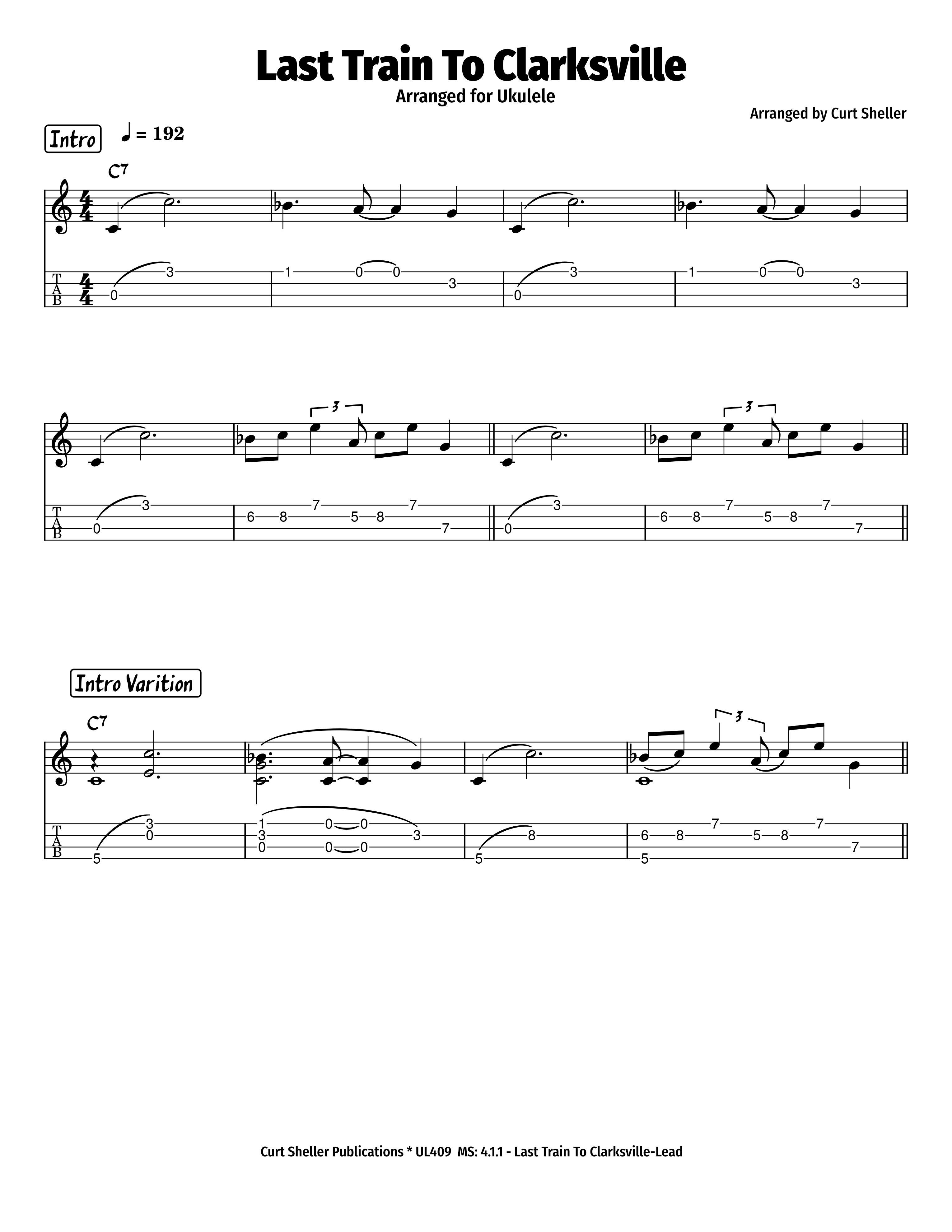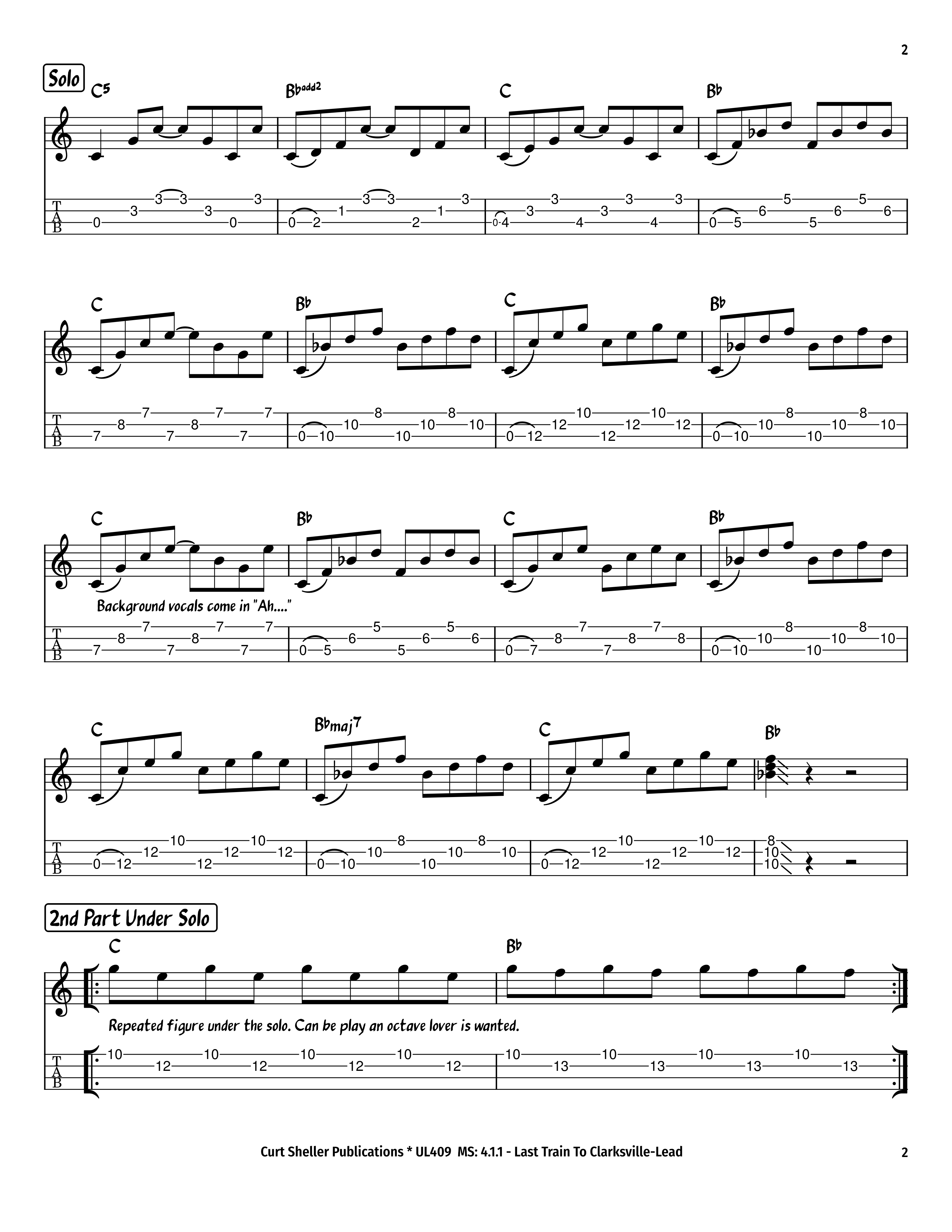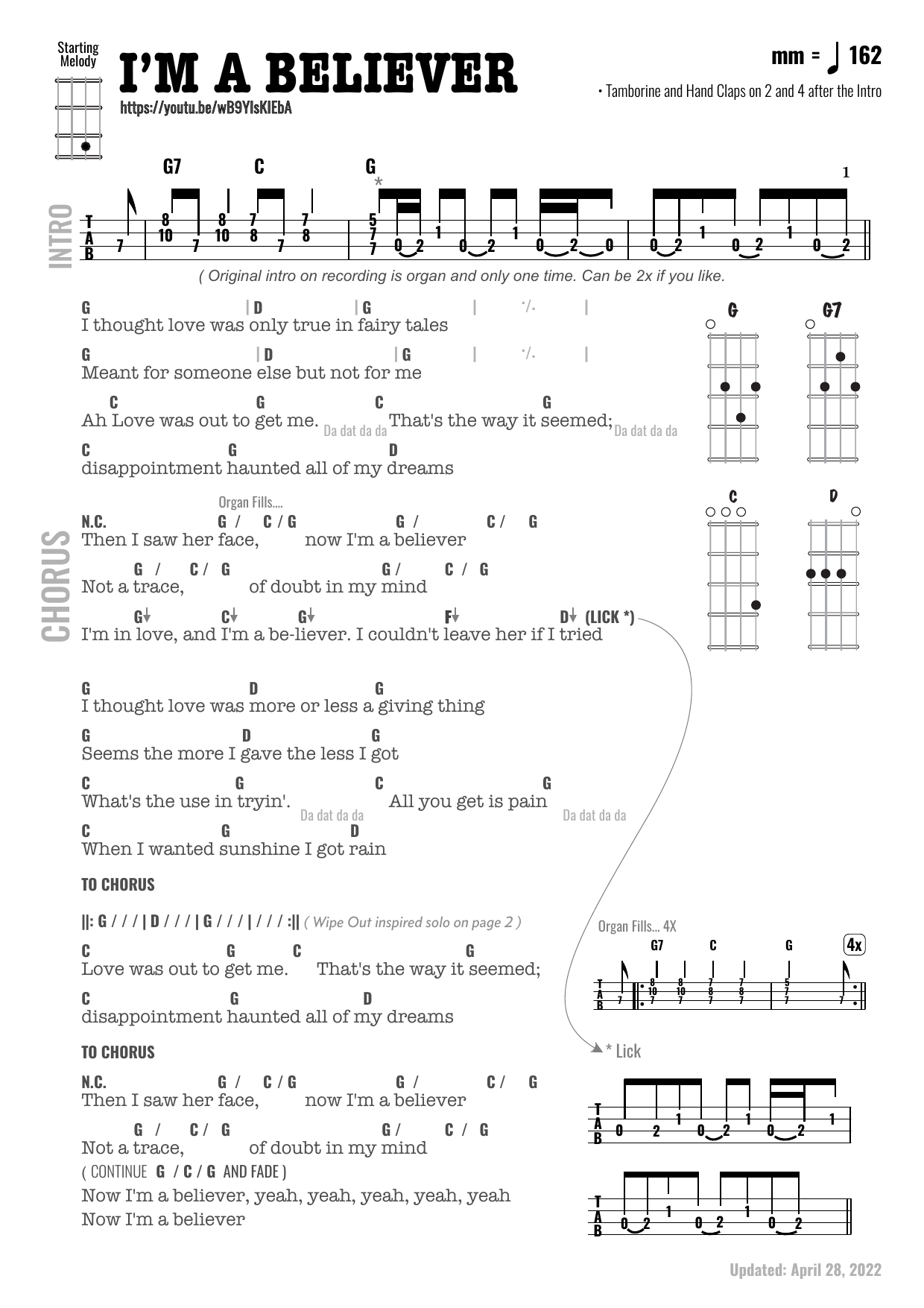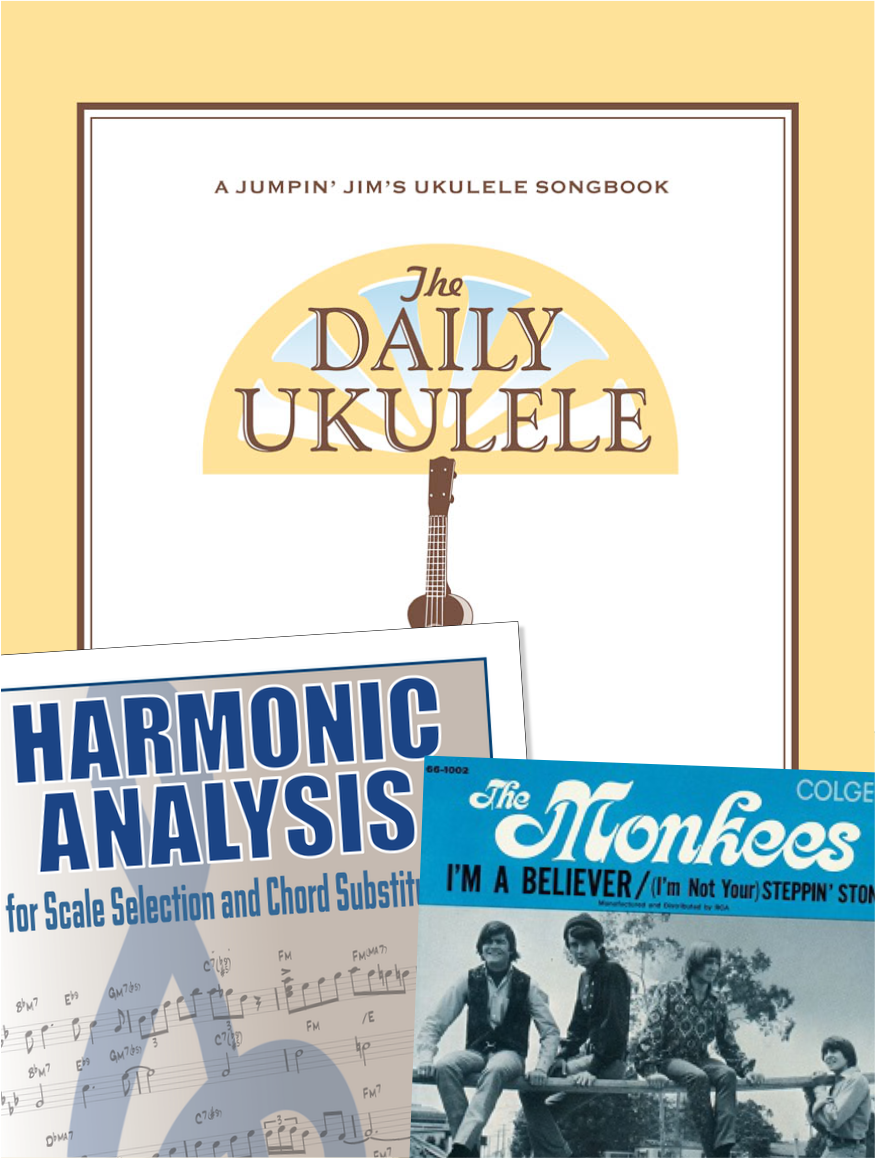Harmonic Analysis (RMA) Worksheet for the song: "Last Train To Clarksville".






Harmonic Analysis (RMA) Worksheet for the song: Last Train To Clarksville.
Last Train to Clarksvillewas featured in seven episodes of the band's television series, the most for any Monkees song. (wikiwand);

Harmonic Analysis (RMA) Worksheet for the song: Last Train To Clarksville.
Last Train to Clarksvillewas featured in seven episodes of the band's television series, the most for any Monkees song. (wikiwand);

Last Train To Clarksville
The song was written by the songwriting duo of Tommy Boyce and Bobby Hart. Boyce has said that the song's opening guitar part (played by Louis Shelton) was an attempt to emulate the type of memorable and clearly identifiable riff that the Beatles had used in songs such as "I Feel Fine," "Day Tripper" and "Paperback Writer". The latter Beatles' song had reached number one on the U.S. charts three months earlier, around the time that "Last Train to Clarksville" was written and recorded. The lyrics, too, were inspired by "Paperback Writer": Hart misheard the end of that song on the radio and thought Paul McCartney was singing "take the last train"; Hart then decided to use the line himself, after he found out that McCartney was actually singing "paperback writer. (wikiwand);

The Daily Ukulele— 365 Songs for Better Living book.




Although the key signature is in the Key of F, the first chord is C7 as a I chord, implying C Mixolydian , one of the modes of F Major. However the progression does not use the characteristic chords or scale note of the Mixolydian mode. I've noted it as if it's a simple I IV V in the Key of C Major , but using all sevenths chords using they corresponding Mixolydian/Dominant scale based on each chord root.
Fine
D.S. al Fine
A Harmonic Analysis (RMA/HA) and its worksheet are intended to show the function of the chords, the harmonic principles used, the keys and tonalities the song explores. And, can be used for scale selections and chord and scale substitutions.
lead leadsheet.Minimal roadmap information such as repeats, fine, D.S., D.C., and codas has been used in preparing the worksheets to somewhat mirror the leadsheet in the Daily Ukulele book.
Yellow Book. You should start to recognize that 1st endings typically always return to a previous verse or an
 section. With a 2nd ending, a transition to a different part of the song, a
section. With a 2nd ending, a transition to a different part of the song, a  or chorus. Harmonic Principles are used for these repeats and transitions.
or chorus. Harmonic Principles are used for these repeats and transitions.- Last Train To Clarksville is in 4/4, Common Time and the Key of C . The original is in the Key of C as well , Tempo: 197 bpm
- Full Diatonic
- Partial Diatonic • Full Diatonic includes Secondary Dominant chords

Contemporary Scales: Minor Pent: Minor Pentatonic, Pent: Major Pentatonic, Blues,
Scale/Mode Names: Ion: Ionian (Major), Dor: Dorian (Minor), Phrygian: Phrygian, Lyd: Lydian, Mix: Mixolydian (Dominant), Aeol: Aeolian (Natural Minor), Loc: Locrian


Lots of cool guitar stuff going on in the original recording that can be adapted to the ukulele. Turning this into a nice performance for your ukulele group.
The form of Last Train To Clarksville on the original record for is:
- Intro
- Verse 1
- Verse 2 with a 2 bar interlude on the I7 chord.
- Verse 3
- Bridge
- Verse 4
- Solo
- Verse 5 with a 2 bar interlude on the I7 chord.
- Outro (faded out on recording) on the I7 chord.
Intro
A cool simple intro that is also used over the C7 . I've spiced it up a bit to make it fuller.

C Tuning, Low or High G
C Tuning, Low or High G
Download the PDF for for the Intro and Solos.
Solos
The solo is simple two chord Mixolydian vamp of triads,
C
&
Bb
with a couple of slight variations adapted for ukulele Low or High G
Tuning.

C Tuning, Low or High G
C Tuning, Low or High G
The background accompaniment chords for the solo are the same as the Interlude and the actual solo chords: C Fadd2 .
NOTE: The Yellow Book leadsheet does not include the Solo (Mixolydian) section.
The second part under the solo is a repeating two note eight pattern under the chords of the solo.
Interlude
The Interlude between the first and second verse is the first two chords of the solos, Mixolydian vamp repeated over and over: C5 to Bbadd2 .
NOTE: The Yellow Book leadsheet does not include the Interlude.
- (wikiwand) Last Train To Clarksville
- SongFacts: Last Train to Clarksville •
- Last Train to Clarksville •
- "Last Train To Clarksville" guitar solo by Louie Shelton • In this video, Louie Shelton you was the guitarist on the original recording of Last Train To Clarksville goes over and shows you exactly what hie did. The original was in the Key of G. I've aapted the intro, interlude, and solos to the key that this lessons and the songs key that is in the Daily Ukulele book.
Related Lessons, Videos, Lesson Series, Songs, Books & Reference Charts, Resources & Assets, Workshops are below.

Harmonic Analysis (HA), also known as the study of chord relationships, is the method used to identify the harmonic role of chords within a chord progression or song. A chord progression refers to a sequence of chords, with each chord having a root note and belonging to a specific chord type. The function of a chord within a particular scale's tonality is determined by its relationship to that scale.

"I'm a Believer" is a song written by Neil Diamond and recorded by the Monkees in 1966 with the lead vocals by Micky Dolenz. The single, produced by Jeff Barry, hit the number-one spot on the U.S. Billboard Hot 100 chart for the week ending December 31, 1966, and remained there for seven weeks becoming the last No. 1 hit of 1966 and the biggest-selling single for all of 1967.

Harmonic Analysis is the understanding of the functional sequence of chords. It is the process used to analyze the harmonic structure of a progression, song or composition. This analysis is then used to make scale selections for improvisation and chord substitution.

Strum a different song every day with easy arrangements of 365 of your favorite songs in one big songbook! The Daily Ukulele features ukulele arrangements with melody, lyrics and uke chord grids and are in ukulele-friendly keys that are particularly suited for groups of one to one hundred to play and sing.

Finally, learn the names of the notes of the ukulele fingerboard in C tuning .

Learn the six fingering principles to navigating the ukulele fingerboard. Fingering is one of the most universal topics. Book: Six Secrets of the Ukulele Fingering

Harmonic Analysis is the understanding of the functional sequence of chords. It is the process used to analyze the harmonic structure of a progression, song or composition. Book: Harmonic Analysis for Scale Selection and Chord Substitution

Learn to read single note melodies in the first/open position is a lot easier than you might think. Book: Ukulele – Reading Music Series – Primer

An organized collection of daily practice and reference material for the contemporary ukulele player for developing the vocabulary and knowledge necessary for single note playing. Book: Daily Practice Material for the Contemporary Ukulele
Checkout the Books & Reference Charts for additional Handy, Dandy Reference Charts.

Ukulele Fingerboard Chart for C Tuning, Low or High G – G C E A

Ukulele Fingerboard Chart for G Tuning, Low or High A – D G B E

A handy reference chart of all 15 major and relative minor key signatures. US Letter 8.5 x 11 sized (ANSI-A), A4
Checkout the Books & Reference Charts for additional Handy, Dandy Reference Charts.





.jpg)